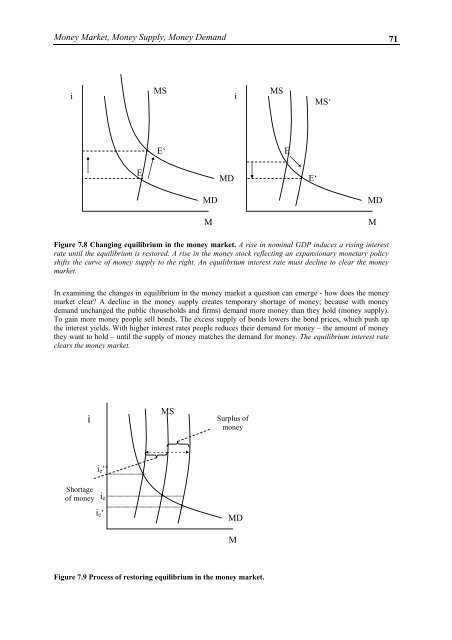MacroeconomicsI_working_version (1)
Create successful ePaper yourself
Turn your PDF publications into a flip-book with our unique Google optimized e-Paper software.
Money Market, Money Supply, Money Demand 71<br />
i<br />
MS<br />
i<br />
MS<br />
MS‘<br />
E‘<br />
E<br />
E<br />
MD<br />
E‘<br />
MD<br />
M<br />
MD<br />
M<br />
Figure 7.8 Changing equilibrium in the money market. A rise in nominal GDP induces a rising interest<br />
rate until the equilibrium is restored. A rise in the money stock reflecting an expansionary monetary policy<br />
shifts the curve of money supply to the right. An equilibrium interest rate must decline to clear the money<br />
market.<br />
In examining the changes in equilibrium in the money market a question can emerge - how does the money<br />
market clear? A decline in the money supply creates temporary shortage of money; because with money<br />
demand unchanged the public (households and firms) demand more money than they hold (money supply).<br />
To gain more money people sell bonds. The excess supply of bonds lowers the bond prices, which push up<br />
the interest yields. With higher interest rates people reduces their demand for money – the amount of money<br />
they want to hold – until the supply of money matches the demand for money. The equilibrium interest rate<br />
clears the money market.<br />
i<br />
MS<br />
Surplus of<br />
money<br />
i e ‘‘<br />
Shortage<br />
of money<br />
i e<br />
i e ‘<br />
MD<br />
M<br />
Figure 7.9 Process of restoring equilibrium in the money market.




